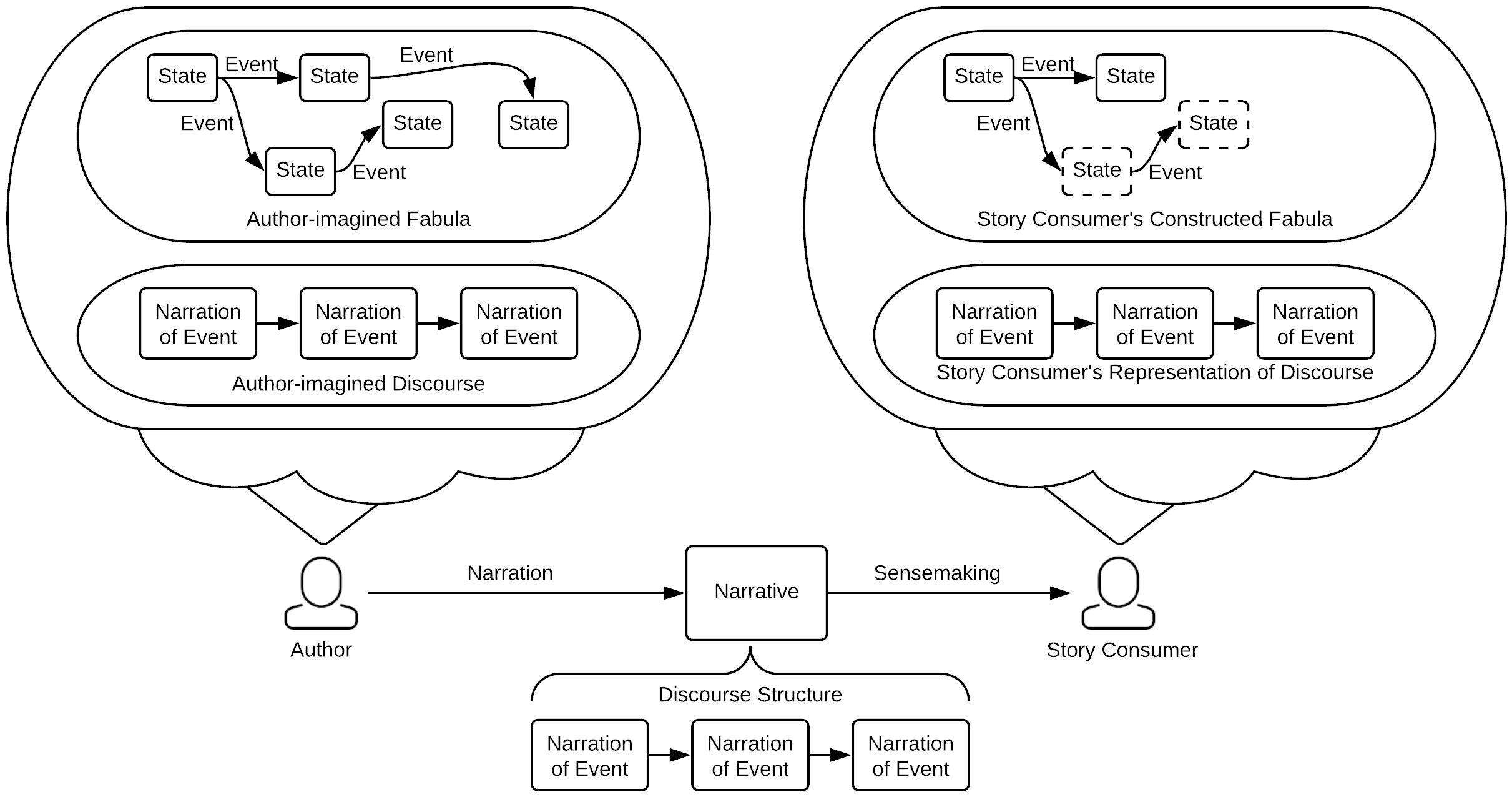
Rogelio E. Cardona-Rivera (QED Lab Director) and R. Michael Young have had their paper Desiderata for a Computational Model of Human Online Narrative Sensemaking accepted for publication at the 2019 AAAI Spring Symposium on Story-enabled Intelligence to be celebrated at Stanford University in California, USA on March 25th through 27th, 2019.
The paper presents a set of constraints that computational models ought to satisfy should they purport to represent/encode the cognitive processes involved in online (i.e. during reading/viewing) human narrative sensemaking. These constraints are:
- Being composed of or supporting a propositional representation;
- Supporting three levels of encoding: the surface code, a discourse model, and a situation model;
- Supporting the story consumer’s creation and management of event structures, including: (a) the segmentation of the narrative discourse stream into event structure, (b) the construction of an event-indexing model of the fabula, and (c) the tracking of three event structures over the course of narrative consumption: the current, integrated, and complete situation models;
- Anticipating and supporting inferences and/or computation over event structures, including: (a) the local and global updating of situation models and (b) the fan effect.
- Supporting the ability to seek answers to the journalistic 5W1H questions provided in the fabula;
- Supporting the process of readers acting as solvers of problems posed by the plot during the process of comprehension;
- Facilitating the attribution of intent to the author’s structuring of the discourse in order to understand and anticipate elements of the fabula; and
- Allowing readers to naturalistically form bridging and elaborative inferences during sensemaking.
These constraints emerged from synthesizing a significant amount of literature within narratology and cognitive psychology that is directly relevant to how humans make sense of stories. The reasoning behind this paper is: if someone claims that their computational model represents some aspect of human narrative sensemaking, then it ought to be consistent with or directly address the above 8 points. The paper also presents a conceptual model for the narrative sensemaking process, beginning with the construction of the story through the design of narrated discourse that presents fabula and ending with the mental reconstruction of the fabula on the basis of said discourse (the image above illustrates said model).
For more details, please consult the paper.
SHARE
Categories
Paper 3
Grant 3
Outreach 3
Recent Posts
-
New Paper: SCOPE: Selective Cross-validataion Over Parameters for Elo
Posted on 09/20/2019 -
New Paper: Creativity Support for Novice and Sensory Impaired Users in DAWs
Posted on 05/15/2019 -
Michael Clemens awarded NSF GRFP
Posted on 05/09/2019 -
QED Lab Awarded Activision Grant
Posted on 04/19/2019
Popular Tags
science game design computer science interactive narrative narrative sensemaking university of utah computational psychology computational modeling laboratory presentation experiment research experience for undergraduates REU cognitive science user interface human-centered computing research artificial intelligence adventure games javascript design engineering research assistant education virtual reality cybersecurity narrative elo machine learning player modeling skill modeling creativity DAWs broadening participation in computing anticipatory thinking panel music keynote